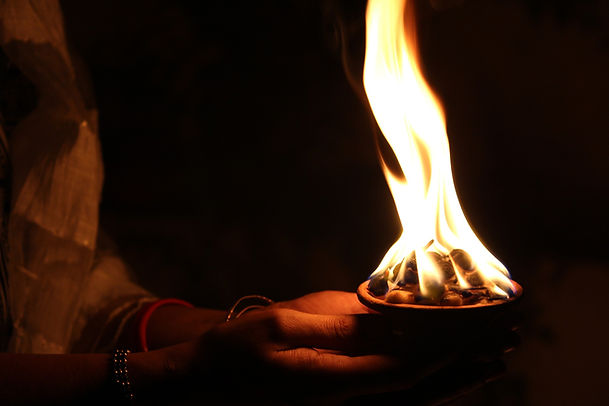IKONI-USKONTOKUVAT
Luonnonuskonnot Hindulaisuus Buddhalaisuus Taolaisuus Kungfutselaisuus Shintolaisuus Juutalaisuus Islam
ORTODOKSINEN KIRKKO KATOLINEN KIRKKO KIRKON ERO 1054 PROTESTANTTISET KIRKOT LUTERILAINEN LIRKKO REFORMOIDUT KIRKOT ANGLIKAANINEN KIRKKO MUITA PROTESTANTTISIA YHTEISÖJÄ SUOMEN KIRKON HISTORIAA
RAAMATTU
TEMPPELIT - MANDIRIT JA HARTAUDENHARJOITUS

HINDULAISUUS HINDULAISUUDEN SYNTY PYHÄT KIRJAT IHMISEN PÄÄMÄÄRÄ KASTIT ELÄMÄNKAAREN JUHLAT KALENDAARIJUHLAT JA PYHIINVAELLUKSET JUMALAKÄSITYS PYHÄT KAUPUNGIT PYHÄT RAKENNUKSET VIDEOT
Kuten muidenkin uskontojen piirissä, temppelit ovat ennen kaikkea jumalan tai jumalien ja ihmisten kohtauspaikkoja. Ne ovat aina olleet myös oman ympäristönsä ja kulttuurinsa edustuspaikkoja. Kaupunkisuunnittelussakin temppelit on Intiassa jo kauan otettu huomioon.
Rakennuttajalta oli hän sitten hallitsija, yksityinen henkilö tai jokin yhteisö, on temppelin rakentaminen aina vaatinut suuria taloudellisia uhrauksia. Temppeliä sinänsä voi pitää uhrilahjana jumalille/jumalalle, ovathan temppelit jumalan taloja, taloja joissa jumala/ jumalat asuvat, missä ihmiset tulevat tapaamaan ja palvomaan heitä.
Temppeli on pyhä, kun papit ovat toimittaneet temppelin vihkimisseremonian ja pyhitetyt jumalien kuvat ja patsaat on asetettu paikoilleen. Hindutemppelit on omistettu yleensä yhdelle temppelin "pääjumalalle", mutta temppelissä palvotaan myös muita hindujumalia.
Tuleva temppeli suunnitellaan tarkasti pyhissä kirjoituksissa annettujen sääntöjen mukaisesti ja hindulaisuuden maailmankaikkeusopin mukaisesti. Temppeli on mikrokosmos, joka edustaa makrokosmosta.
Pohjakaava muistuttaa mandalaa. Keskeistä ovat ympyrän ja neliön muotoiset tilat. Temppelin keskimmäinen neliö (=maailmankaikkeuden ydin) on omistettu Brahma-jumalan hallintaan.
Tämän neliön ympärillä on tärkeimpien jumalien ja 32 vähäisemmän jumalan ulompi kehä. Nämä edustavat ihmisten maailmaa. Tämän kehän kulmissa seisovat dikpalat (jumalryhmät), joita on neljä. He vartioivat maailmankaikkeuden neljää pääilmansuuntaa. Näiden kehien läpi kulkevat palvojat kohti temppelin pyhintä kohdetta. Pyhiinvaeltajat voivat käyskennellä temppelin pyhitetyn alueen ympärille rakennetussa pylväskäytävässä. Yleensä temppelialuetta ympäröivät korkeat muurit, joiden tarkoituksena on rajata ihmisille ja jumalille rauhallinen paikka.

KUVA:Kirsti Suonsyrjä

Jumalien kohtaaminen temppelissä
Uskova voi harjoittaa hartautta mandireissa joko yksin tai yhdessä toisten kanssa (puja)
Kuva: Pixabay Jason Goh
Ennen teppeliin tulemista palvoja pesee itsensä huolellisesti puhtaaksi, sillä hänen tulee olla myös ruumiillisesti puhdas suorittaessaan rituaaleja.
Temppeliin päästyään, hän helisyttää kelloa, jumalien huomion herättämiseksi. Hänellä on mukanaan jumalien ilahduttamiseksi uhrilahjoja, jota voivat olla kukat, suitsukkeet, ruoka, gheetuikut (palvontaa nimitetään silloin aratiksi) tai rahaa. Hän asettaa lahjansa jumalankuvien tai patsaiden eteen.
Suurissa temppeleissä temppelipapit voivat avustaa. Uskova lukee rukouksia.
Papit ovat alttarien edustoilla ja antavat vastaavasti palvojalle jo uhrattuja ja siunattuja uhrilahjoja (prasada) ja tekevät palvojan otsaan punaisesta värijauheesta tai tuhkasta tehdyn merkin (tika-merkki)

Puja
eli ryhmähartaudenharjoitus temppelissä voi olla kolmea muotoa:
-
Bhajan eli Hymnien veisuu, mikä sisältää kellojen ja tamburiinien soittoa, jotkut osallistujat voivat tanssia, pappi lukee katkelman Bhagavadgitasta ja lukee lopuksi rauhanrukouksen.
-
Arti tervetuliaistoimitus: pappi panee tarjottimelle 5 kynttilää, jotka tarkoittavat viittä elementtiä: tulta, maata, ilmaa, eetteriä ja vettä. Uskovat pitävät käsiään liekkien yläpuolella, sitten päänsä päällä saadakseen jumalan voiman ja siunauksen itselleen.
-
Hawan tarkoittaa tulen uhraamista. Siinä käytetään puuta, kamferia ja lehmän tai puhvelinmaidon rasvaa. Pappi siirtää tulen alttarille, joka vertauskuvallisesti esittää jumalan suuta, joka nielaisee sen eteen pannun uhrin. Tämän jälkeen luetaan otteita Vedoista, minkä jälkeen tapahtuu papin ja muiden osallistujien seremoniallinen peseytyminen, joka symbolisesti tarkoittaa heidän puhtauttaan jumalan edessä.
Illalla viimeinen seremonia on papin suorittama nukkumaanmenoseremonia, jossa pappi vie rumpujen ja kellojen soidessa jumalpatsaat ensin pestäviksi ja sitten nukkumaan aviopuolisoidensa viereen.
Hartautta voidaan harjoittaa päivittäin myös kotialttarin ääressä omassa kodissa.
Lähteet: Jordan Michael, Itämaista Viisautta s. 52-53
Clarke PeterB, Maailman uskonnot Elävän uskon perusteet s.139
Keene Michael: Maailman suuret uskonnot s.22-23

